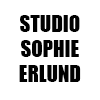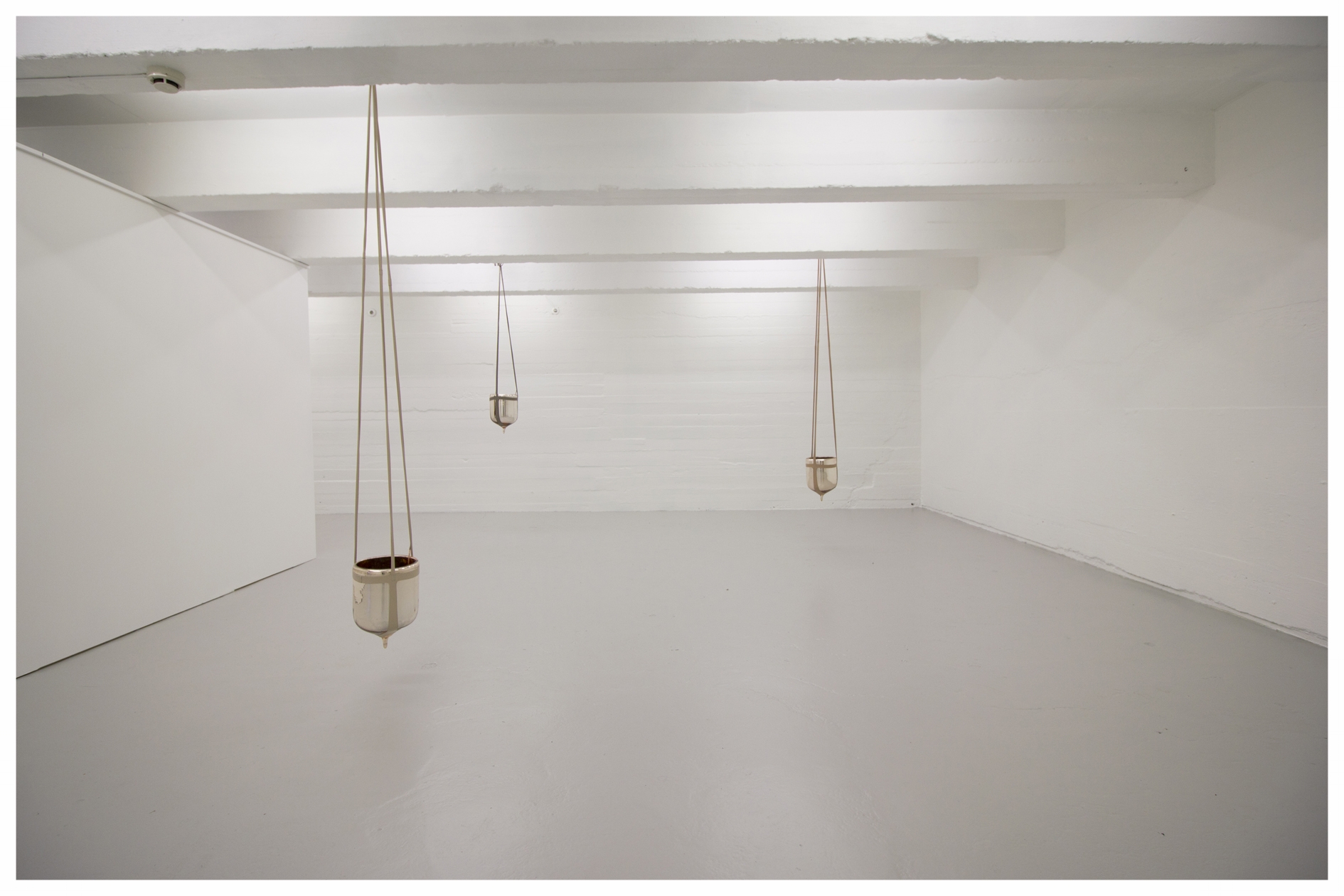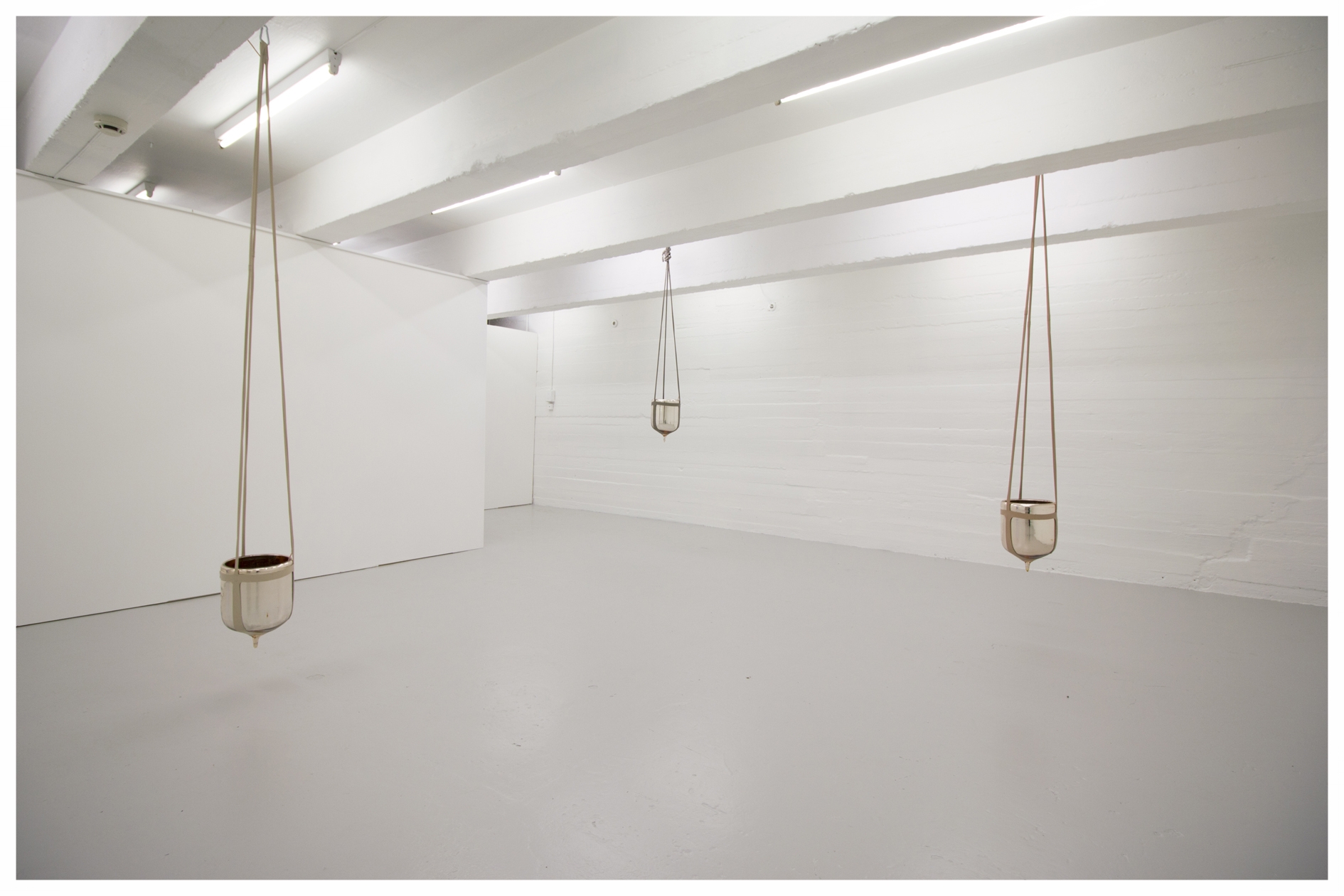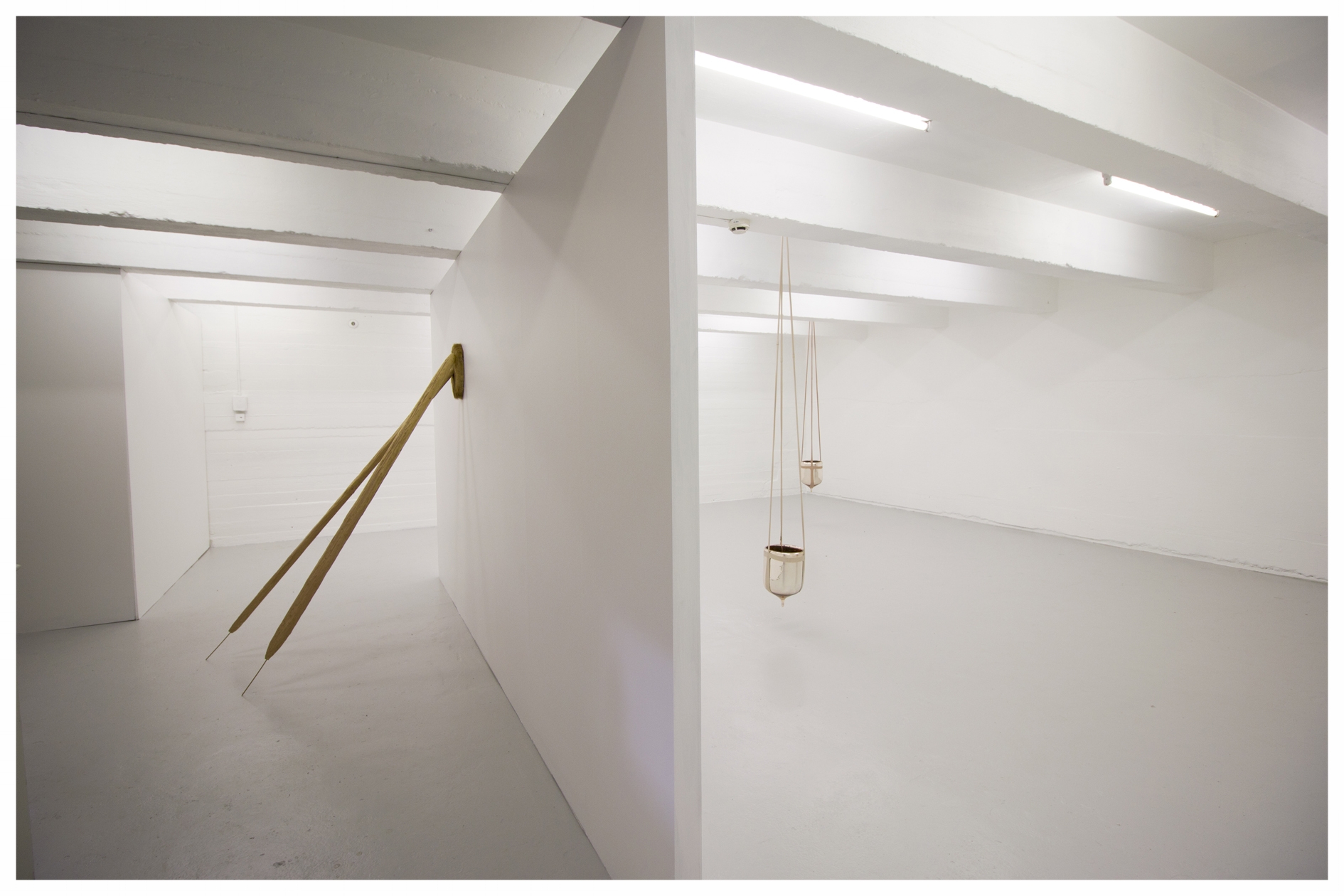SHIFT, 2016
Elephant Kunsthall, Lillehammer, NO
photo: Mads Andreassen
featuring works:
The brute limits of self determination, 2015
Evanescence, 2016
Substantial mechanisms, 2016
Vessels of precarity
A truism: lives stretch out in a series of shifts. Whether at the scale of days, years, or decades, existence constitutes a chain of transitions from one state to another. There are moments of development and crisis, of personal collapse and reinvention. Identity, who we say that we are, is bound up with these transitions and, perhaps more importantly, how we narrate them. At stake here are fictions that constitute reality, ideas about the self that become true because we assert them to ourselves and express them for others. These are fictions that help coalesce events so violent and tumultuous for the ego they would be otherwise too loud to be heard or too heavy to be handled.
For her first solo exhibition in Norway, Berlin-based Danish artist Sophie Erlund explores precisely the raw chaos of these transitions, as well as our impulse to form that chaos into a comprehensible chain of events. Titled SHIFT, the exhibition combines uncannily visceral sculpture with vast, subtle soundscapes, inviting visitors into an audio and visual environment that considers the contours of psychologically defining moments and the ways we relate to them.
The exhibition, held at Elephant Kunsthall—a converted industrial space in downtown Lillehammer—opens with a chord of aggression, immediately confronting viewers with the sculpture The brute limits of self-determination. This work, like many of Erlund’s, deals visually with psychological balance and the ways limits are pushed in the process of experiencing and navigating transition in life.
While this hairy, ungainly, even suggestively sexual sculpture sets the emotional and corporeal tone of the exhibition, at the show’s center, the sound installation Substantial mechanisms combines sculptural found objects and tonal compositions to create a strikingly forceful aural and spatial experience. In the Kunsthall’s main gallery, three immense, copper-plated, doubled-walled glass vessels hang suspended from the ceiling by leather harnesses. Each vessel serves as a source for a three-part audio work composed by the artist from ambient recordings taken in her studio. As the composition unfolds, it travels from one vessel to the next.
Substantial mechanisms draws inspiration from the work of anthropologist Victor Turner and his notion of ‘social dramas’, the kind of self-staging we perform at moments of major life transitions. Turner ascribed three stages to the social drama: separation (a crumbling of the ego’s former state), liminality (an airy, amorphous restructuring), and integration (the re-emergence of a voice or self in harmony with the new environment).
With Substantial mechanisms, Erlund draws our attention to the violently dis - jointed nature of these transitions and the individual’s role in finding that new voice amidst a changed environment. The composition seeks to interpret musically the stages in Turner’s model: hectic thumping and the guttural vibrations of Inuit throat singing breaks apart into an ambient, polyphonic collage of violins that, in turn progresses to a structured conclusion of voices in rhythmic concert with the resonant vibration of the artwork’s own glass vessels. Experiencing the work, one can’t help but sense how Erlund plays with the tension between entropy and structure in her compositions, and the visitors’ attention returns constantly to their proclivity to project shape and trajectory onto the soundscape.
The vessels—arresting in their color and shape—were recovered by the artist from an abandoned bowling alley in Leipzig. Notably, Erlund avoids sentimentality or nostalgia by stripping the objects of all reference to their original industrial or functional purpose; instead, she focuses on the potential of the vessels’ form and tactility to accent and counterpoise the themes of the musical composition.
SHIFT lingers on this technique of denaturing objects from their contexts with a second sound work, Evanescence, which samples field recordings of the docks and boats in Hamburg’s harbor. Where Evanescence evokes a sensorial identity of the port’s workers, industries, and traditions, it nevertheless denudes its source, inserting that identity into a place wholly alien to it. Here, the work inverts the tension of Substantial mechanisms: a pre-extant narrative is decomposed into a new form of chaos.
Alien as the maritime sounds may be to the Kunsthall, the harbor is a fitting synecdoche for an exhibition that explores shifts from disjunction to confluence, from disruption to stability, from there to here and back to there again. As a place of departure, the harbor points to the enormous unknown facing each craft between its port of call and the next dock. Vessels passing beyond the harbor’s confines occupy both a position of total freedom and one of terrifying uncertainty.
There is a fragility in transition, in liminality, in the state of the in-between. Erlund knows this well, but she also knows that fragility suggests delicateness, intricacy, sensitivity. This is the realm that her work explores, where volatility effects precarity, but precarity reveals a structure as complex as it is fine-grained. In Erlund’s terms, however, these ideas are hardly abstract. By inflecting visitors’ thoughts through our own ‘social dramas’, SHIFT addresses us directly, personally, probing our need for self-staging and the role of self-narrativization in moments of crisis, change and rebirth. These fictions facilitate our transitions, and the transitions keep us alive.
“Vessels of Precarity” by William Stewart, published in SHIFT exhibition catalogue 2016.






